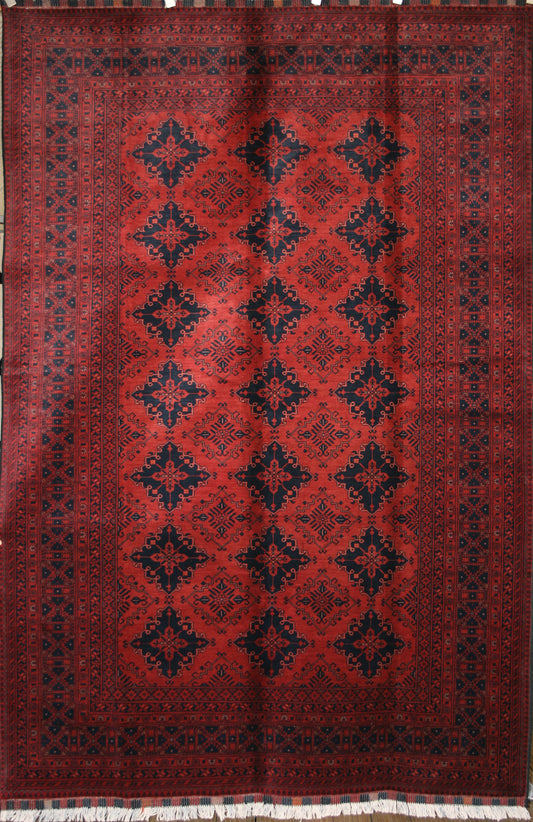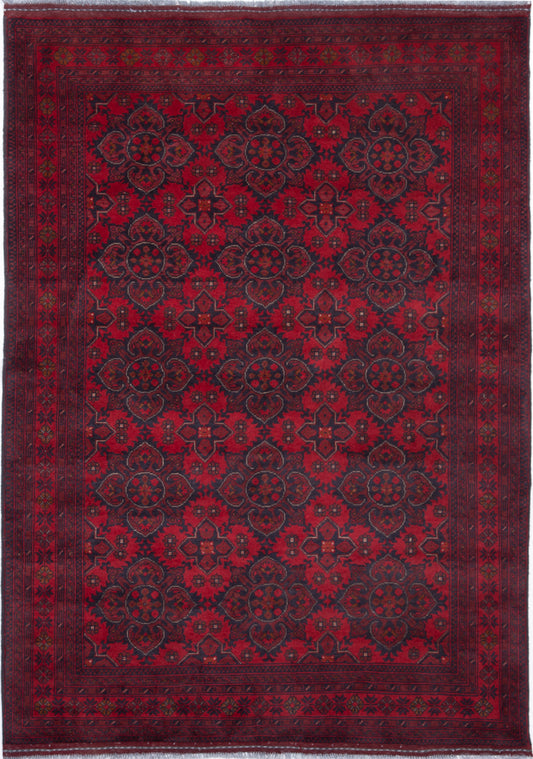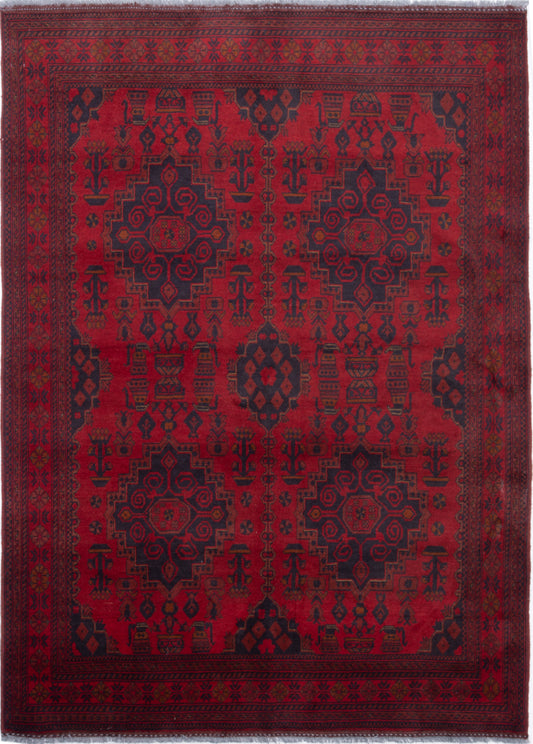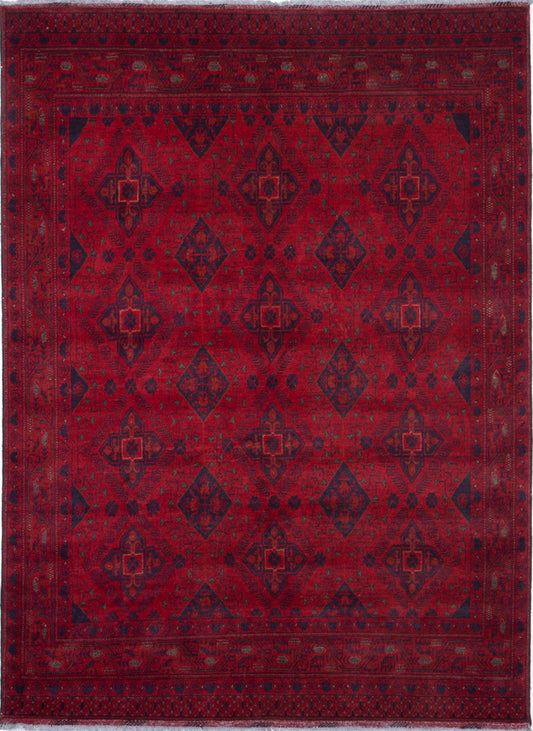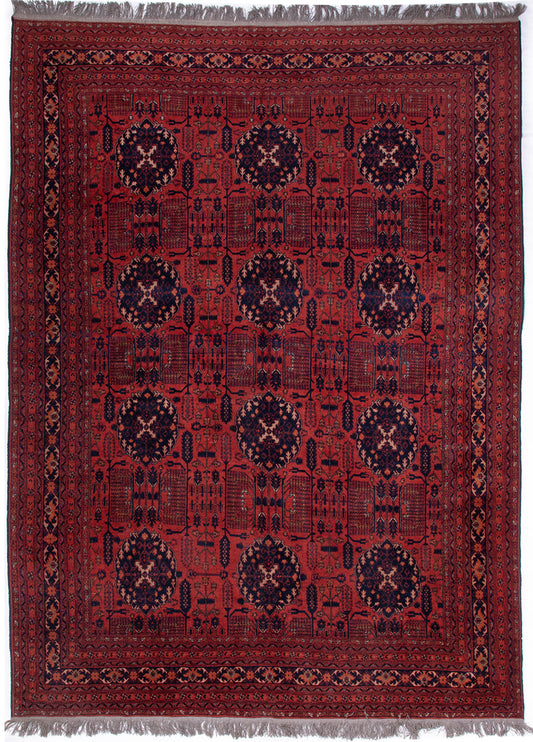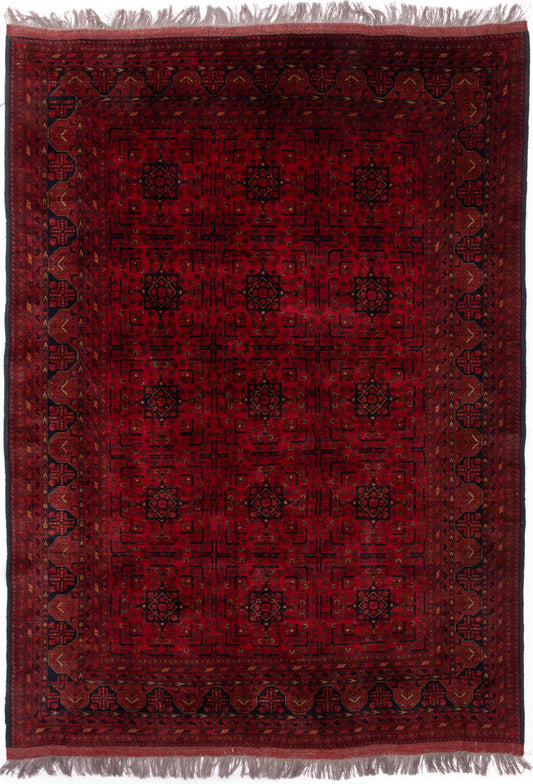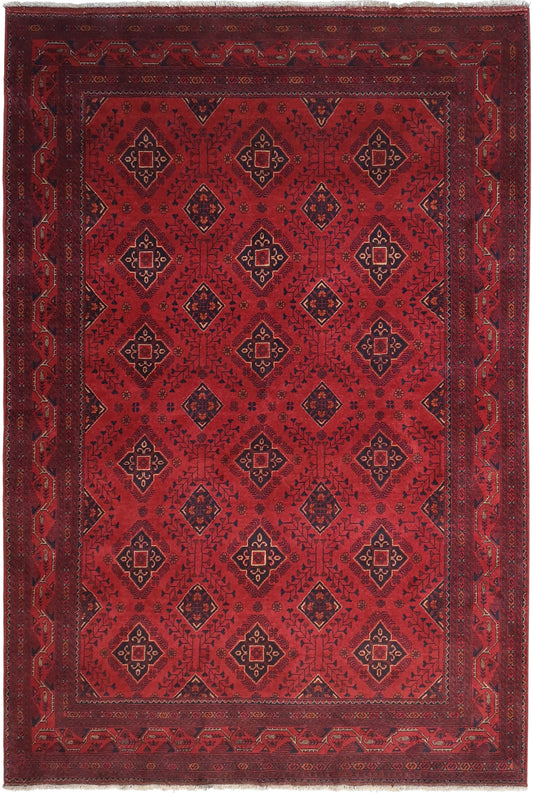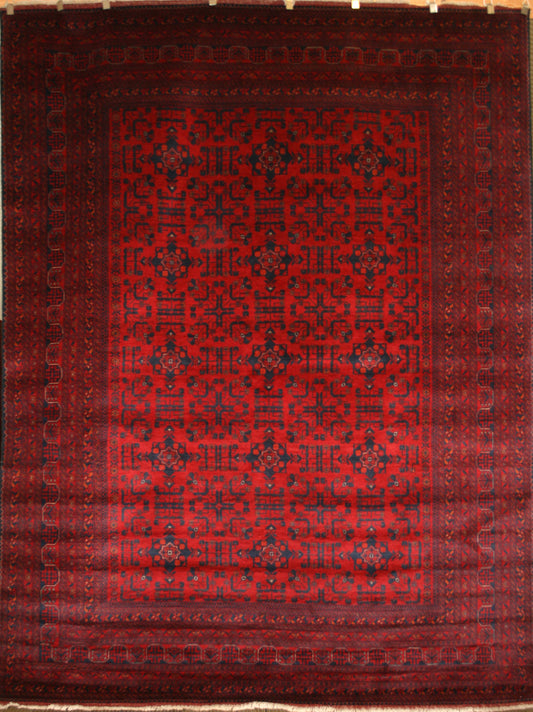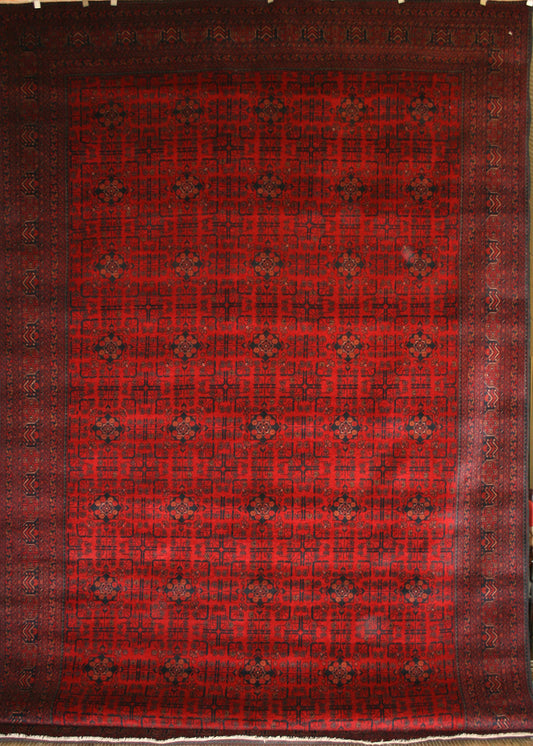Khal Mohammadi Rug History & Origin Guide
Discover the world of Khal Mohammadi rugs, known for their rich colours, intricate patterns and exceptional craftsmanship. These rugs are not only beautiful but hold a deep connection to the legacy of their namesake, weaver Khal Mohammad.
The Story of Khal Mohammad
Khal Mohammad was an influential rug weaver who made a significant impact on the Afghan rug industry. Through his work in the late 20th century, most prevalent in the 1970s, he developed a unique weaving style that set his creations apart from others in the region. Although specific details about his early life and introduction to rug weaving are scarce, his techniques and designs have left an indelible mark on the world of rug craftsmanship.

Characteristics of Khal Mohammadi Rugs
There are several key features that distinguish Khal Mohammadi rugs from other types of rugs:
Materials used
These rugs are made using high-quality wool sourced from local Afghan sheep, known for its durability and natural sheen. This wool is hand-spun, adding a distinctive texture and character to each rug.
Distinctive colours and dyes
Khal Mohammadi rugs are renowned for their rich, warm colours, particularly deep reds, dark blues, and rich browns. The dyes are created using natural materials, such as madder root, indigo, and walnut husks, which provide a beautiful, lasting colour that grows more appealing with age.
Knotting techniques
These rugs are hand-knotted using a traditional Turkish or Ghiordes knot, which is known for its strength and durability. This knotting style allows for intricate patterns and designs to be created with a high level of detail.
Common motifs and designs
Khal Mohammadi rugs often feature geometric patterns, stylised floral motifs, and elements inspired by nature. The designs are typically symmetrical and well-balanced, with a central medallion or repeated pattern dominating the rug.
Production Process of Khal Mohammadi Rugs
The creation of a Khal Mohammadi rug is a labour-intensive process, requiring exceptional skill and attention to detail:
Traditional hand-knotting techniques
Each rug is meticulously hand-knotted by skilled artisans using traditional techniques passed down through generations. This handcrafted process ensures that each rug is a unique work of art with its own individual character.
The role of apprentices in preserving craftsmanship
As with many traditional crafts, the art of rug weaving is taught through an apprenticeship system, with experienced weavers passing on their knowledge and skills to the next generation. This ensures the continued production of high-quality Khal Mohammadi rugs and the preservation of this unique weaving tradition.
Quality control and attention to detail
Throughout the production process, each rug is carefully inspected to ensure that it meets the exacting standards of quality and craftsmanship associated with Khal Mohammadi rugs. This attention to detail helps to maintain the reputation and value of these Turkman-inspired creations.
Relationship between Khal Mohammadi and Aqcha Rugs
Khal Mohammadi rugs are a specific type or subset of Aqcha rugs. Aqcha is a town in the northern region of Afghanistan, where various types of rugs are produced and the name given to this style of rug even when made in surrounding areas. The rugs from this region are known for their deep reds and simple patterns.
Khal Mohammadi rugs stand out as a distinctive style within the broader category of Aqcha rugs. While sharing some common characteristics with other Aqcha rugs, Khal Mohammadi rugs are easily identifiable due to their specific design elements, rich colours, and high-quality construction.
Modern Khal Mohammadi Rugs
Today, the legacy of Khal Mohammad continues to inspire the production of high-quality rugs in Afghanistan. Modern Khal Mohammadi rugs stay true to the original designs and techniques, while also incorporating contemporary elements to appeal to a wider audience.
Adaptations and variations in contemporary designs
While the fundamental characteristics of Khal Mohammadi rugs remain consistent, contemporary designs may incorporate updated colour palettes or slightly altered motifs to suit modern tastes. These adaptations ensure that the rugs remain relevant and sought-after in today's market.
Preserving traditional craftsmanship in a modern world
Despite the changes in design and production methods over time, the essence of Khal Mohammadi rugs remains rooted in their traditional craftsmanship. The dedication to preserving these age-old techniques ensures that each rug is a testament to the skill and artistry of Afghan weavers.
Ethical production and fair trade
As the demand for authentic handcrafted rugs continues to grow, it is important to support ethical production practices and fair trade. By purchasing a Khal Mohammadi rug, you can contribute to the livelihood of artisans and help preserve their unique heritage for future generations.
Other Notable Rugs from Afghanistan
Apart from Khal Mohammadi rugs, Afghanistan is home to various other types of hand-knotted rugs, each with its unique characteristics, designs, and regional influences. Some of the other prominent rug types from Afghanistan include Kunduz, Beljik, and Andkhoy rugs.
Kunduz Rugs
Kunduz rugs are named after the Kunduz province in northern Afghanistan. These rugs typically feature geometric patterns and a diverse range of colours, with red and blue being the most common. Kunduz rugs are known for their quality craftsmanship and high knot density, which can range from 120 to over 300 knots per square inch. They are usually made from high-quality wool and are highly sought after for their durability and intricate designs.
Beljik Rugs
Beljik rugs, also known as Baljik or Baluch rugs, are known for their striking colours and luxurious feel. They are produced by the Baluch people living in the border regions of Iran, Afghanistan, and Pakistan. Beljik rugs are primarily characterized by their deep, rich reds and blues, achieved through the use of high-quality natural dyes. These rugs often feature geometric patterns and tribal motifs, with a relatively lower knot density compared to other Afghan rugs. They are made from fine, soft wool, and are highly prized for their unique appearance and feel.
Andkhoy Rugs
Andkhoy rugs are named after the town of Andkhoy in northern Afghanistan. They are hand-knotted rugs that feature a combination of Turkmen and Uzbek influences in their designs, as the region has been historically inhabited by both Turkmen and Uzbek tribes. Andkhoy rugs are characterized by their geometric patterns, with deep reds and blues being the predominant colours. They are typically made from high-quality wool, with a knot density ranging from 100 to 200 knots per square inch. Andkhoy rugs are known for their durability and unique design elements that set them apart from other Afghan rugs.
These rugs, along with Khal Mohammadi rugs, showcase the rich rug-weaving heritage and craftsmanship of Afghanistan. Each rug type has its distinct features and appeals, reflecting the diversity of the regions and tribes that contribute to Afghanistan's vibrant rug-making tradition.
Conclusion
Khal Mohammadi rugs are not only works of art but also pieces of history that embody the legacy of their namesake weaver, Khal Mohammad. These rugs stand as a testament to the skill, creativity, and passion of Afghan weavers, and owning one is a unique opportunity to bring a piece of this rich cultural heritage into your home. As you explore the world of Khal Mohammadi rugs, you'll undoubtedly appreciate the artistry, craftsmanship, and history behind these stunning creations.
Browse Our Current Selection of Khal Mohammadi Rugs
-
Afghan Khal Mohammadi Rug
Regular price £2,975.00Regular priceUnit price / per -
Afghan Khal Mohammadi Rug
Regular price £365.00Regular priceUnit price / per -
Afghan Khal Mohammadi Rug
Regular price £1,375.00Regular priceUnit price / per -
Afghan Khal Mohammadi Rug
Regular price £1,375.00Regular priceUnit price / per -
Afghan Khal Mohammadi Rug
Regular price £1,355.00Regular priceUnit price / per -
Afghan Khal Mohammadi Rug
Regular price £3,715.00Regular priceUnit price / per -
Afghan Khal Mohammadi Runner Rug
Regular price £935.00Regular priceUnit price / per£1,055.00Sale price £935.00Sold -
Afghan Khal Mohammadi Rug
Regular price £3,165.00Regular priceUnit price / per -
Afghan Khal Mohammadi Rug
Regular price £1,535.00Regular priceUnit price / per -
Afghan Khal Mohammadi Runner Rug
Regular price £1,115.00Regular priceUnit price / per£1,325.00Sale price £1,115.00Sale -
Afghan Khal Mohammadi Rug
Regular price £3,185.00Regular priceUnit price / per -
Afghan Khal Mohammadi Rug
Regular price £7,135.00Regular priceUnit price / per

